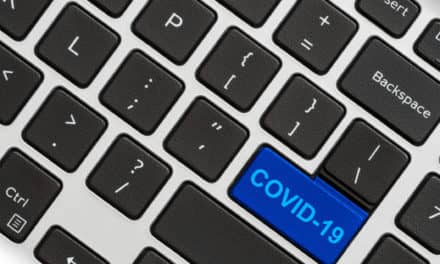So you’re on the fence about using a cloud-based practice management system. You’ve heard they’re unreliable and more expensive. You have to have a whole new computer system just to use the cloud. Why use the cloud if you have only one office? It goes on and on. The truth is that cloud-based orthodontic management is practically the same as server-based from the user’s perspective, but adds a myriad of features that can actually build your practice.
Let’s get the negatives out of the way first. One criticism of starting a cloud-based system is that you have to have a whole new computer system, or at least a significant upgrade. This, unfortunately, is a reality. You have to have a network installed in the office with premium ethernet cable, and the internet connection has to be fast enough that upload and download of data from the cloud is seamless and reliable. The pace of the after-school patient load demands that you must be able to quickly and easily bring up patient files, photos, and x-rays. You also have to have computers that have operating systems configured to run cloud-based programs, which means that some older machines may need to be replaced.
[sidebar float=”right” width=”250″]
Ransomware Safe?
Still not convinced of the merits of a cloud-based practice management system. Well, here’s one more: For the moment, they are less vulnerable to ransomware attacks. That’s according to Steve McEvoy, an IT consultant with MME Consulting, who 3 years ago had maybe one customer a month fall victim to a ransomware attack. Now, it’s multiple customers a week.
Almost every cloud-based practice management program has a database. That database is home to the practice’s schedule and financials. As McEvoy puts it, the database is the equivalent of a “living breathing heart.” As the heart of the program (and the practice), it is open and active all the time, which actually protects it from ransomware.
“You can really only encrypt a file that is stationary and at rest. So if a database is always open and in use, there’s never an opportunity to encrypt it,” McEvoy says. “So, at least currently, ransomware has never been able to destroy the most important piece of data—which is your database.”
That’s not to say that everything within a practice management program is safe. Saved on most cloud-based practice management programs are JPG and PDF files—including x-ray images, facial photos, and scanned patient documents—common targets of ransomware.
This is where a good backup strategy is key. As McEvoy puts it, for a practice to realistically protect itself from a ransomware attack, it must have a backup strategy with “depth”—meaning a system with multiple days of revisions, ideally one that goes back weeks not just days. And here, he contends, cloud-based practice management companies do a better job than a practice relying on its own in-house backup plan to protect its server-based practice management program. OP[/sidebar]
The counterargument to this problem is that you are going to have to replace your computer system every so often anyway. The hidden benefit is that with cloud-based management you don’t need a server or any sort of backup. A simpler computer system means that all the units are in essence workstations, which cuts down the cost. A tip here is that when upgrading your computer system, it is recommended that you use a dental specific IT company that has worked with orthodontic programs and orthodontic practice management providers. The practice management software companies can recommend dental IT providers in your area.
Another criticism of relying on the cloud is the nature of the internet. If the internet goes down, you have a nonfunctioning office. If you had a server-based system, you could still run your office from at least one computer. This is a valid criticism but should not be a deal-breaker. A simple solution is to have a mobile hotspot on hand if such a situation occurs. The company that provides your cell phone can provide these units, often for less than a dollar per day. If the internet goes down, at least one computer can be connected by WiFi and the office can still function.
A third criticism of cloud computing is that there is a difference in the feel and function of the program if it is cloud-based. That is an absolute misconception. The programs have been designed and adapted so that you cannot tell the difference between server-based and cloud-based. The transition from one to the other is seamless. One tip to improve the speed would be to reduce the size of any photographic images to a maximum of 1 MB. For orthodontic purposes, you don’t need large photo files because most of the time we print up montages of small images. Newer cameras should be reconfigured from high default resolutions to minimize the file size, thereby speeding the upload/download times.
Perhaps the most important benefit of cloud-based orthodontic management is the ability to work from home. There are many practices that do not work 5 days a week. So what happens to the office when there are no patients scheduled? Does a skeleton staff come in to work? Is the office closed? Practice consultants and marketing specialists will tell you that it is not healthy for the practice to be closed regularly, even for lunch. The patient who is given a few names of orthodontists by the referring dentist or friends might end up in someone else’s office if there is no one to answer the phone. So the answer is that the practice that wants to build must be available to new and existing patients as a full time entity.
So whether you have one office or multiple locations, the cloud is the answer. Orthodontic management companies often let you share licenses between multiple computers. So, for example, let’s say you purchased six licenses for six computers in one office, and the computers are designated 1 through 6. The orthodontic management companies will let you use license 2, for example, on different machines, and they will function as long as you don’t try to use both computers at the same time. So it would be easy to have an office laptop that shares a license with one of the least used computers in the office and have one of the staff members take it home when the office is closed. Phone calls from the office can be forwarded to the staff member‘s phone. That staff member can make appointments, field emergencies, generate insurance claims, and as far as anyone is concerned, the office is “open.” This is a huge boon for the orthodontic community where full-time availability is not often the norm.
Clearly, the benefits of cloud computing outweigh any extra expenditures that arise, even if you only have one office. Although you need to upgrade a computer system for cloud computing, and may need your own mobile hotspot, servers and backup can be eliminated. But the most important benefit, and the one that can build your practice, is the ability for a staff member to work at home, thereby creating a full time office presence. OP











